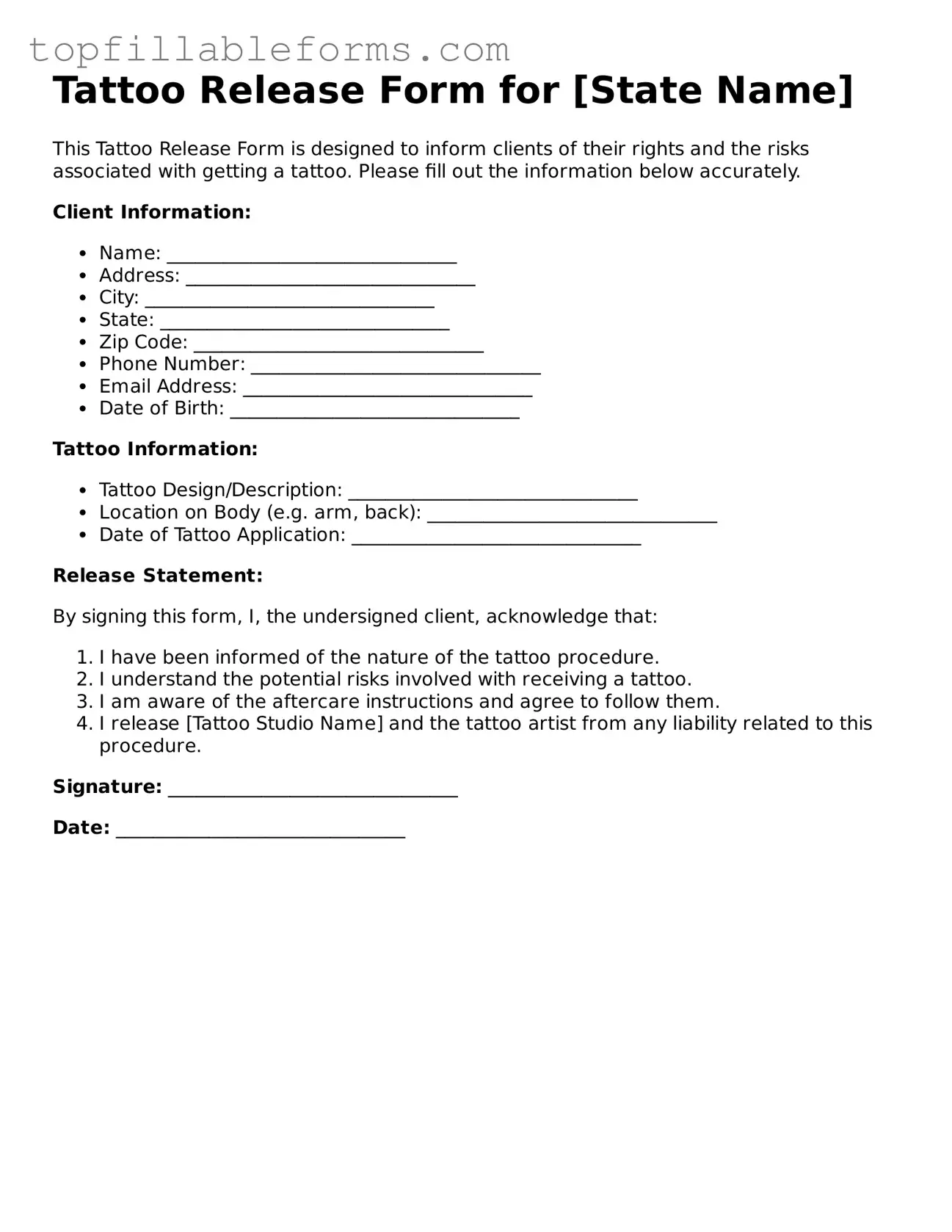Tattoo Release Form for [State Name]
This Tattoo Release Form is designed to inform clients of their rights and the risks associated with getting a tattoo. Please fill out the information below accurately.
Client Information:
- Name: _______________________________
- Address: _______________________________
- City: _______________________________
- State: _______________________________
- Zip Code: _______________________________
- Phone Number: _______________________________
- Email Address: _______________________________
- Date of Birth: _______________________________
Tattoo Information:
- Tattoo Design/Description: _______________________________
- Location on Body (e.g. arm, back): _______________________________
- Date of Tattoo Application: _______________________________
Release Statement:
By signing this form, I, the undersigned client, acknowledge that:
- I have been informed of the nature of the tattoo procedure.
- I understand the potential risks involved with receiving a tattoo.
- I am aware of the aftercare instructions and agree to follow them.
- I release [Tattoo Studio Name] and the tattoo artist from any liability related to this procedure.
Signature: _______________________________
Date: _______________________________
